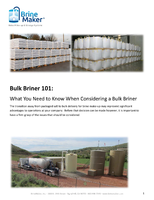Design-Build is the Emerging Preferred Approach in Industry

Design/Build projects can be a single part or an entire system.
Typically, the type of work coming to Machinists Inc. is build to print. Somebody designed and created blueprints, then sent them to MI to quote and build.
More and more, MI is seeing customers that need a part or a complete system designed and manufactured, sometimes installed and tested. They prefer working with a supplier that can provide more than just building to their provided plan, they need design and manufacturability for their project, in some cases.
MI can provide all the detailed aspects of the design, then works collaboratively with the customer to develop the product, then proceeds into manufacturing of it at that point. This is called design-build, new to the manufacturing industry, our customers recognize the value in the process. In the construction industry, design-build yields breakthroughs in quality, cost, and schedule. It has been a proven process over many years and MI has found that is provides outstanding results in the manufacturing industry as well. MI offers a comprehensive array of services for design-build projects, that could include: engineering, mechanical, fabrication, controls and installation.
"Many of our customers do not have the engineering resources at their disposal or they are involved in other projects. It allows them to subcontract the design effort out, and not have to maintain an engineering staff," said Jeff Tomson, MI director of marketing. "The second part is, we're finding the inception/idea-to-market is faster."
Customers do not have to go through the full development process.
They can go through various stages of the design process and then implement production as they go through, so it is a concurrent design-build process.
Through this type of approach, Tomson said they are able to capitalize on their manufacturing strengths.
"We look at designs for manufacturability. Every time we are looking at designs, we are thinking, how am I going to build this? Thinking about how it is supposed to look in the design aspect," Tomson said. "We spend a lot of effort developing the design for manufacturability to review along the way."
So when it comes to manufacturing, there's very little left to uncertainty. And the manufacturing processes are well-defined, expediting the manufacturing process, controlling costs.
Design-build is changing the industry, Tomson believes.
Design-build is a flexible structure for building parts and systems
"We are given a concept. They pitch that out to three or four suppliers. They say, come to us with your proposal, maybe some rough order sketching and the estimate for costs, both the design and the build," Tomson said. "Then the customer can make a selection based on past experience of the supplier, price and schedule."
In comparison, a turnkey project would be a situation where the customer has a project to be completely designed, built, installed and tested. So MI would go through the process of running a series of tests, packaging the whole thing up, taking it to the customer's location literally anywhere in the U.S. or the world. Install and run a series of tests, then turn it over to them in production.
In design-build, the typical delineation is, after it is built with some preliminary testing at MI, then it is handed over the customer. And it is up to the customer to take it from there, install it and run the first tests in their facility.
Design/Build often includes proprietary processes or products.
In terms of which is better, Tomson said it is very customer-driven.
"Some customers would prefer to not have anyone coming into their facility. And other customers say I need this up and running and need some test articles on it. Your performance payment is based on the success of that," Tomson said. "It's how the customer wants to manage it. It's not better or worse either way."
Large and small projects can be developed with the design-build structure. MI would work with the wide variety of engineering resources available to them. MI would act as the prime contractor, so they would be responsible for the design and manufacturing effort.
Tomson said they are seeing this as the trend for their customer base.
"We are seeing more and more customers, big customers, that are pitching this as their preferred approach going forward. It helps reduce the time and helps them put their engineering resources on other projects they have going on internally," Tomson said.
For more information contact Jeff Tomson, Machinists Inc., 206-763-0990 – www.machinistsinc.com




